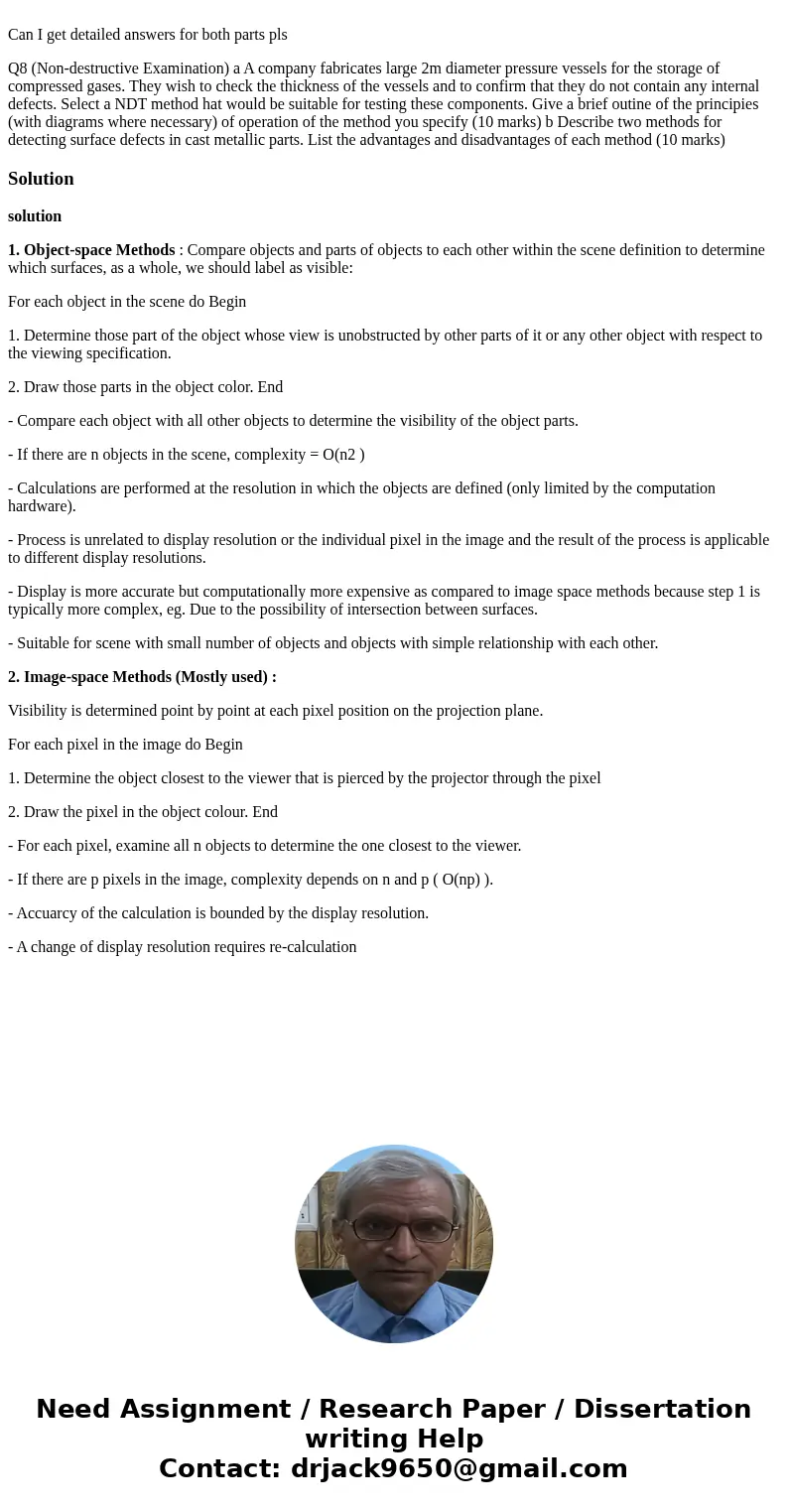Can I get detailed answers for both parts pls Q8 Nondestruct
Can I get detailed answers for both parts pls
Solution
solution
1. Object-space Methods : Compare objects and parts of objects to each other within the scene definition to determine which surfaces, as a whole, we should label as visible:
For each object in the scene do Begin
1. Determine those part of the object whose view is unobstructed by other parts of it or any other object with respect to the viewing specification.
2. Draw those parts in the object color. End
- Compare each object with all other objects to determine the visibility of the object parts.
- If there are n objects in the scene, complexity = O(n2 )
- Calculations are performed at the resolution in which the objects are defined (only limited by the computation hardware).
- Process is unrelated to display resolution or the individual pixel in the image and the result of the process is applicable to different display resolutions.
- Display is more accurate but computationally more expensive as compared to image space methods because step 1 is typically more complex, eg. Due to the possibility of intersection between surfaces.
- Suitable for scene with small number of objects and objects with simple relationship with each other.
2. Image-space Methods (Mostly used) :
Visibility is determined point by point at each pixel position on the projection plane.
For each pixel in the image do Begin
1. Determine the object closest to the viewer that is pierced by the projector through the pixel
2. Draw the pixel in the object colour. End
- For each pixel, examine all n objects to determine the one closest to the viewer.
- If there are p pixels in the image, complexity depends on n and p ( O(np) ).
- Accuarcy of the calculation is bounded by the display resolution.
- A change of display resolution requires re-calculation

 Homework Sourse
Homework Sourse